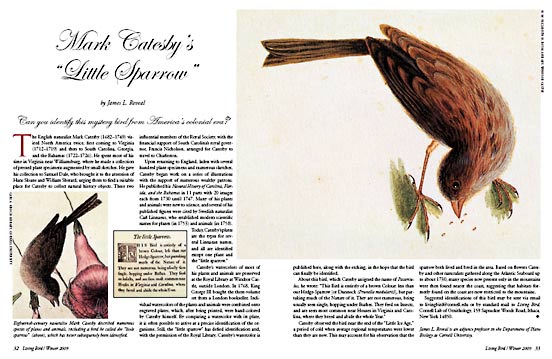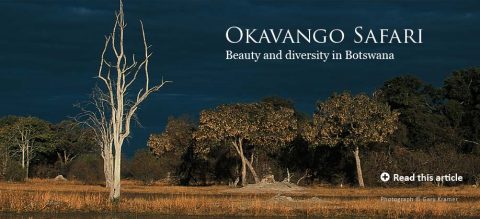Mark Catesby’s Mysterious “Little Sparrow”

Can you identify this mystery bird from America’s colonial era?
The English naturalist Mark Catesby (1682–1749) visited North America twice, first coming to Virginia (1712–1719) and then to South Carolina, Georgia, and the Bahamas (1722–1726). He spent most of his time in Virginia near Williamsburg, where he made a collection of pressed plant specimens augmented by small sketches. He gave his collection to Samuel Dale, who brought it to the attention of Hans Sloane and William Sherard, urging them to find a suitable place for Catesby to collect natural history objects. These two influential members of the Royal Society, with the financial support of South Carolina’s royal governor, Francis Nicholson, arranged for Catesby to travel to Charleston.
Upon returning to England, laden with several hundred plant specimens and numerous sketches, Catesby began work on a series of illustrations with the support of numerous wealthy patrons. He published his Natural History of Carolina, Florida, and the Bahamas in 11 parts with 20 images each from 1730 until 1747. Many of his plants and animals were new to science, and several of his published figures were cited by Swedish naturalist Carl Linnaeus, who established modern scientific names for plants (in 1753) and animals (in 1758). Today, Catesby’s plates are the types for several Linnaean names, and all are identified except one plant and the “little sparrow.”
Catesby’s watercolors of most of his plants and animals are preserved at the Royal Library at Windsor Castle, outside London. In 1768, King George III bought the three-volume set from a London bookseller. Individual watercolors of the plants and animals were combined onto engraved plates, which, after being printed, were hand-colored by Catesby himself. By comparing a watercolor with its plate, it is often possible to arrive at a precise identification of the organisms. Still, the “little sparrow” has defied identification and, with the permission of the Royal Library, Catesby’s watercolor is published here, along with the etching, in the hope that the bird can finally be identified.
About this bird, which Catesby assigned the name of Passerculus, he wrote: “This Bird is entirely of a brown Colour; less than our Hedge-Sparrow [or Dunnock (Prunella modularis)], but partaking much of the Nature of it. They are not numerous, being usually seen single, hopping under Bushes. They feed on Insects, and are seen most common near Houses in Virginia and Carolina, where they breed and abide the whole Year.”
Catesby observed the bird near the end of the “Little Ice Age,” a period of cold when average regional temperatures were lower than they are now. This may account for his observation that the sparrow both lived and bred in the area. Based on flowers Catesby and other naturalists gathered along the Atlantic Seaboard up to about 1730, many species now present only in the mountains were then found nearer the coast, suggesting that habitats formerly found on the coast are now restricted to the mountains.
Suggested identifications of this bird may be sent via email to livingbird@cornell.edu or by standard mail to Living Bird, Cornell Lab of Ornithology, 159 Sapsucker Woods Road, Ithaca, New York 14850.
James L. Reveal is an adjunct professor in the Department of Plant Biology at Cornell University.

All About Birds
is a free resource
Available for everyone,
funded by donors like you
American Kestrel by Blair Dudeck / Macaulay Library



